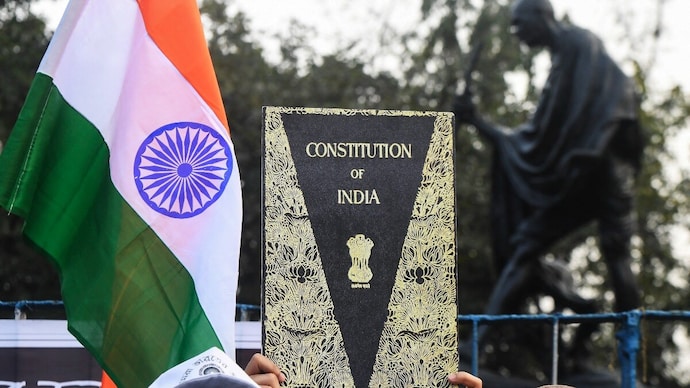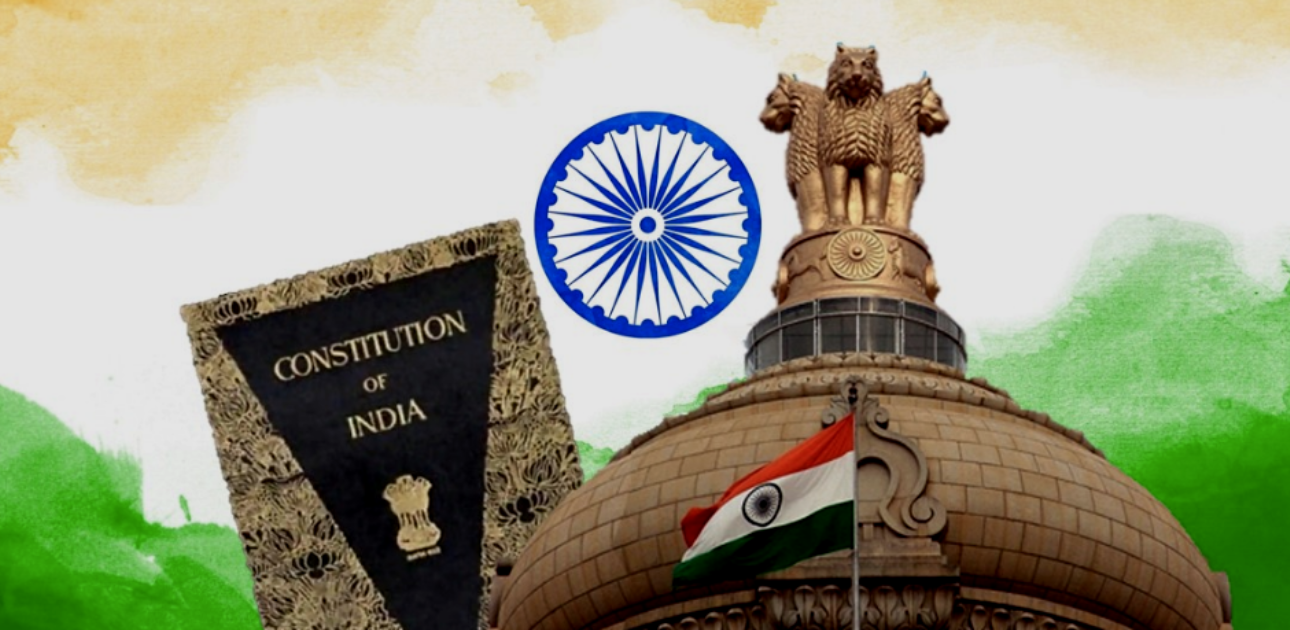Constitution of India Affirms ‘Unity in Diversity’ with Dual Official Names: India and Bharat

Constitution of India Affirms ‘Unity in Diversity’ with Dual Official Names: India and Bharat
In a remarkable testament to its diverse cultural tapestry, the Constitution of India, in Article 1, has enshrined the official names of the nation as ‘India’ and ‘Bharat.’ This constitutional provision, adopted on September 18, 1949, under the guidance of Dr. B.R. Ambedkar, stands as a symbol of unity and integrity, reflecting the rich historical and linguistic diversity that characterizes this vast nation.
India, that is Bharat: A Preamble to Unity
Article 1 of the Indian Constitution succinctly declares, “India, that is Bharat, shall be a Union of States.” This dual nomenclature not only underscores the geographical expanse but also pays homage to India’s ancient heritage. The term ‘India’ acknowledges the nation’s contemporary identity, while ‘Bharat’ reaches back through millennia to evoke its historical and cultural roots.
Historical Significance: Tracing the Origins
The inclusion of ‘Bharat’ alongside ‘India’ in the Constitution has its origins deeply entrenched in India’s historical and cultural legacy. ‘Bharat’ is derived from ancient scriptures and epics, particularly the revered Hindu scriptures like the Mahabharata and the Puranas. According to these texts, ‘Bharat’ was a name used to refer to the Indian subcontinent, tracing its lineage to the legendary King Bharata, an ancestor of the epic hero Bhishma.
This historical resonance of ‘Bharat’ highlights the deep cultural connections that have sustained India through the ages. By recognizing ‘Bharat’ as an official name, the Constitution pays tribute to the enduring influence of India’s ancient civilization, its languages, and its customs, which continue to shape the nation’s identity.
Linguistic Diversity: Celebrating India’s Languages
India is a linguistic kaleidoscope, with hundreds of languages spoken across the country. The constitutional acknowledgment of both ‘India’ and ‘Bharat’ accommodates this linguistic diversity. ‘India’ serves as a unifying name, accessible and comprehensible to people of various linguistic backgrounds. Meanwhile, ‘Bharat’ resonates deeply with speakers of Hindi and several other Indian languages, fostering a sense of belonging.

This linguistic inclusivity reaffirms the principle of unity in diversity, one of the cornerstones of India’s national ethos. It ensures that every citizen, regardless of their language, feels an equal part of the nation.
Dr. B.R. Ambedkar’s Vision: Architect of Inclusivity
The draft of Article 1, recognizing ‘India’ and ‘Bharat’ as official names, was a product of visionary leadership, spearheaded by Dr. B.R. Ambedkar. As the Chairman of the Drafting Committee of the Constitution, Dr. Ambedkar played a pivotal role in shaping India’s constitutional identity.
Dr. Ambedkar’s decision to incorporate both names in Article 1 was a masterstroke. It was a nod to the nation’s cultural pluralism and an effort to bridge historical and contemporary identities. His commitment to inclusivity and fairness is evident in this provision, which has stood the test of time.
Contemporary Significance: Unity Amidst Diversity
In contemporary India, the dual official names ‘India’ and ‘Bharat’ continue to hold immense significance. They represent a harmonious blend of the ancient and the modern, the traditional and the progressive. This duality encapsulates the essence of India as a nation that cherishes its roots while advancing into the future.
Moreover, these names reflect the nation’s enduring commitment to unity. India is a diverse country with distinct regions, languages, and cultures. Yet, it remains united under the umbrella of its dual identities, demonstrating that diversity need not lead to division. ‘India’ and ‘Bharat’ serve as a reminder that, at its core, the nation is bound by shared values and a common vision for the future.
Conclusion: A Symbol of National Pride
The Constitution of India’s recognition of ‘India’ and ‘Bharat’ as official names is a testament to the nation’s complex yet beautiful tapestry of history, culture, and identity. It is a declaration that India is not bound by a singular narrative but thrives on its diversity. The provision embodies the spirit of inclusivity and unity that has been the driving force behind the country’s progress.
As India continues to evolve and face new challenges in the 21st century, the dual official names remain a source of national pride. They encapsulate the timeless values that have guided this nation through millennia and continue to inspire its people to strive for a brighter future while cherishing their rich heritage.

The dual official names, ‘India’ and ‘Bharat,’ also carry significant cultural weight. ‘India’ is a name recognized internationally and resonates with the global community. It serves as a bridge between India and the world, representing the nation’s global presence and contributions in various fields, including technology, science, and culture. ‘Bharat,’ on the other hand, reinforces the idea of India’s self-identity, emphasizing its cultural uniqueness and historical continuity. This duality allows India to engage with the world while remaining grounded in its rich heritage.
Furthermore, the coexistence of ‘India’ and ‘Bharat’ reflects the Indian ethos of embracing change while preserving tradition. India is a rapidly developing nation, embracing modernity and progress. ‘India’ symbolizes this forward-looking approach, representing a nation that adapts to contemporary challenges and aspirations. ‘Bharat,’ conversely, is a constant reminder of India’s ancient wisdom and enduring values, guiding its journey into the future.
In a country as vast and diverse as India, symbolism matters. The dual official names, carefully chosen and enshrined in the Constitution, serve as a unifying force that transcends regional, linguistic, and cultural boundaries. They provide a sense of identity and belonging to every citizen, irrespective of their background, fostering a sense of patriotism and pride in the nation’s rich tapestry.
In conclusion, the dual official names, ‘India’ and ‘Bharat,’ encapsulate the essence of India’s identity—both timeless and contemporary, both global and local. They reflect the nation’s ability to harmonize its diverse elements and navigate the complex landscape of the 21st century while staying true to its roots. As India continues to evolve and make its mark on the world stage, these names stand as a testament to its enduring spirit, resilience, and commitment to unity in diversity.




